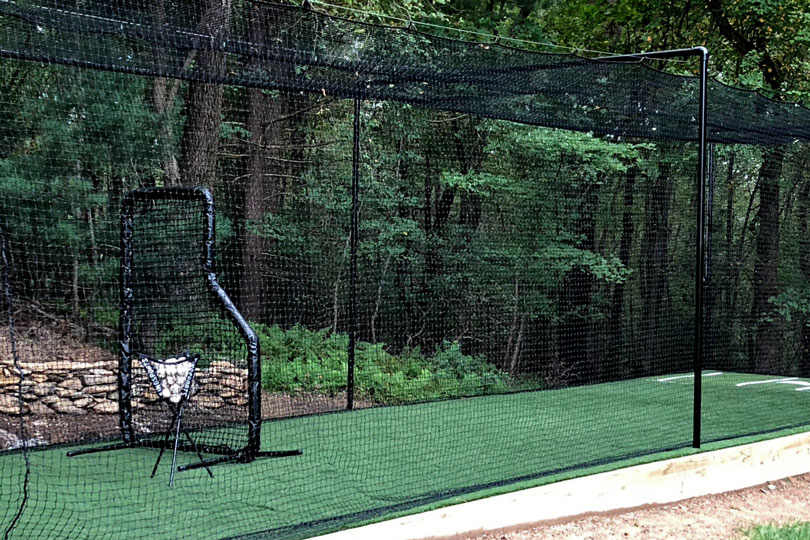How to Attack a 2-3-2 Zone Defense in Flag Football
One of the most asked questions flag football coaches ask is how to attack a zone defense. In fact, it was that very question that led to me start selling my Headache Offense and Unbeatable Defense online more than a decade ago. I decided to come up with a set of plays just for this article to show how easy beating a zone defense really is.
Here is one example of how you can move the ball vs. a 2-3-2 zone in a 7man blocking league. All three of these plays attack the “bubble” underneath the Safety and between the Linebacker and Cornerback. This is a very vulnerable part of the zone defense.
Play #1
[Link to play diagrams found at bottom of article]
LSE – Post-corner route with the initial break at about 7 yards depth. Be sure the post part of the route aims to the opposite sideline at about 20-25 yards depth. This is important, as you’ll see in the next play.
RSE – Post route with the break at about 5-7 yards depth.
RWO – Square in route at about 5 yards depth. The ball will be thrown to the “bubble” area.
Center – After an initial block, run a 5 yard hook route above the LT.
QB – The reads are simple.
1) First look at the “bubble” and if it is open, pass to the RWO running into it.
2) If the LB is threatening the bubble, pass to the center. If the Safety is threatening the bubble, pass to the RSE post at the shaded area in the diagram. Pass a bullet to him in stride.
3) If the FS moves to help cover the RSE, just pass to the LSE’s post-corner.
Now what happens if the strong side Corner follows the RWO, anticipating the in route? That brings us to the next play.
Play #2
[Link to play diagrams found at bottom of article]
LSE – Exactly like the previous play’s post-corner, but without the second break. Continue the post across the field until you run out of bounds.
RSE – Run a post exactly like you did in the previous play, except at about 12-15 yards break outside to the sideline at a point 2 or 3 yards underneath your break.
RWO – Run a square in like before, but before you get to the middle of the field, turn around and settle down in the “bubble”.
Center – Same as previous play.
QB – Only run this play when you notice the Corner following the RWO on the square in.
1) Read the RWO first and make sure the Corner follows him. If he doesn’t, pass to the RWO in the “bubble”. If he does, read the SS.
2) If the Safety isn’t in position to defend the RSE’s break outside, pass to him. Because the Corner vacated the outside zone, he should be open.
3) If the Safety is in tight coverage with the RSE on his out break, pass to the LSE downfield for a huge gain! Be sure and hit him in stride.
If the LB is inside the “bubble”, pass to the Center. If the Corner retreats back to his zone before you pass to the RSE, pass to the RWO in the “bubble”.
Play #3
[Link to play diagrams found at bottom of article]
Here’s another way to attack that same “bubble”.
LSE – Run either a streak or a post similar to the one in the previous play.
RSE – Run a 5-7 yard hook.
RWO – Run a 5 yard hook, sell it by squaring your shoulders to and making eye contact with the QB. Then, quickly break upfield in a streak.
Center – Same as previous play.
QB –
1) Start out reading the RWO and (assuming he’s not open) pump-faking to him on the hook.
2) Then read the SS. If he is not in position to cover the “bubble”, pass to the RSE. If the SS is in position to cover it, read the RWO streaking. The Safety read must be very quick as you don’t have very much time to pass to the hook-and-go.
Of course, if the LB is in the “bubble” pass to the Center. And if both the RSE and RWO are covered, pass to the LSE downfield.
As with any play set, you need to practice with every possible read the QB can make so the reads become second nature. That way, he won’t have to “think”, he just has to “react”. If you just put a QB under center without detailed reads, you are destined to fail. You can’t expect a QB to be able to just look out at 4 or 5 different receivers and find the open guy (unless, of course, you have a Joe Montana on your team). That’s like telling a checkers player to just “get the king” in a game of chess!
But, if you teach your QB exactly what to read and how to react, then you don’t have to have a brilliant signal caller, you just need to have one that’s willing to practice. Of course, that means you can’t have too many plays or you won’t be able to execute them correctly. That’s why you need to choose the most powerful plays that can be effective when run over and over again vs. the same team.
Beating a zone defense is about strategy, not athleticism. It’s about out-thinking your opponent. Start drawing zone defenses on pieces of paper and trying to find the weaknesses in them and brainstorm how to exploit them. If you start using your brain, you can easily dismantle any zone defense you face!
[Play diagrams can be viewed HERE]


